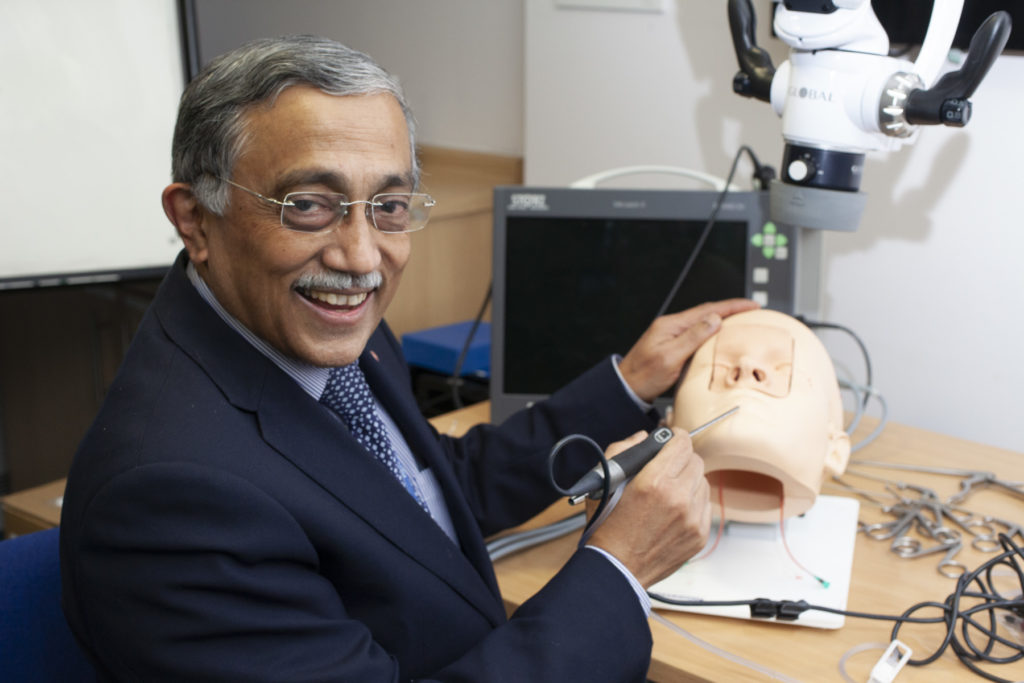Mr Muhammed Shahed Quraishi OBE, a Consultant Ear, Nose and Throat (ENT) Surgeon at Doncaster and Bassetlaw Teaching Hospitals (DBTH), has co-authored a ground-breaking report which shows that ear, nose, and throat (ENT) hospital admissions due to infections have decreased by nearly 57.56% due to the physical interventions put in place to tackle COVID-19.
The report, entitled ‘A multicentre retrospective cohort study on COVID‑19 related physical interventions and adult hospital admissions for ENT infections’ is the largest study on this topic area issued to date, and as such has been published in the European Archives of Oto-Rhino-Laryngology (Europe) – one of the leading journals of ENT in Europe.
The findings are part of a multi-centre study (taking place in Doncaster, Sheffield and Nottingham), performed in conjunction with specialists Natasha Quraishi, Meghna Ray, Rishi Srivastava, and Jaydip Ray. They covered a sample population of about two million people, comparing adult admissions with acute tonsillitis, peritonsillar abscess, epiglottitis, glandular fever, peri-orbital cellulitis, acute otitis media, acute mastoiditis, retropharyngeal abscess and parapharyngeal abscess in the one-year period after the introduction of COVID-related physical interventions (2020–2021) with a one-year period before this (2019–2020).

Mr Quraishi explains some of the findings of the study: “In this study, there are 1,864 adult admissions in the 12 months before 23 March 2020. However, there were 791 in the 12 months after 23 March, which is a reduction of 1,073.
“Tonsillitis and Peritonsillar abscess constitute nearly 70% of ENT hospital admissions. This study shows that tonsillitis admissions reduced by 64.4% and Peritonsillar abscess reduced by 60.68%, all because of the physical interventions related to COVID.”
Tonsillitis is often caused by old and flu viruses which are caught when tiny droplets pass into the air when you talk, sneeze or cough. Peritonsillar abscesses usually happen as a complication of tonsillitis.
The findings of the study also prove the integral part that the physical interventions of COVID-19, such as wearing masks and more frequent hand washing, have played in managing bed spaces in hospitals. Mr Quraishi continues: “Out of the two million people within our sample size, we are saving 2,146 bed days per year. If apply this across the whole country, with a population of 68 million or so, we save nearly 73,000 bed days per year.”
The study itself concludes by suggesting that there is evidence to support the use of physical intervention to prevent the spread of viral respiratory diseases in the future, as a way of freeing up bed spaces in hospitals and also limiting the prominence of ENT related infections within our society.
In addition to this paper, Mr Quraishi has recently had two other pieces of work published. The first of these was published in Current Opinion in Otolaryngology (USA) and was entitled ‘Otolaryngology education and training in the COVID-19 and post-COVID-19 digital era: a developing world perspective’. The second, called ‘The role of sepsis screening, SIRS and qSOFA in head and neck infections: An audit of 104 patients’, was published by Clinical Otolaryngology (the official Journal of the UK ENT Society).



